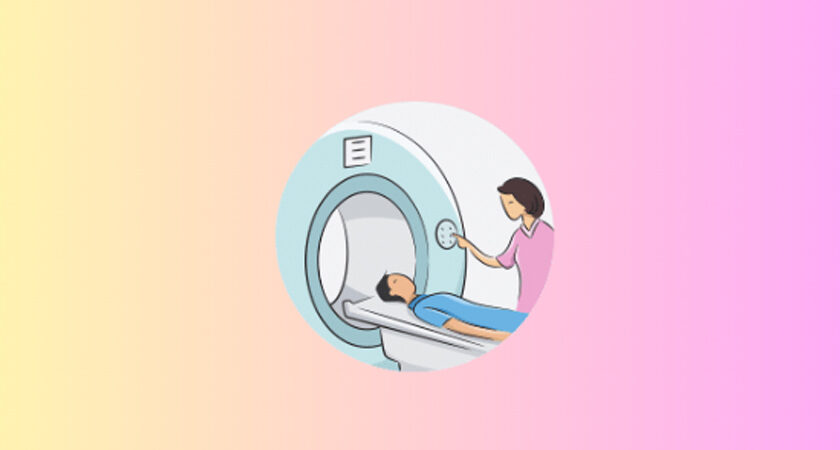Medical imaging has revolutionized the field of healthcare by providing invaluable insights into the human body, aiding in the diagnosis and treatment of various medical conditions. Radiology, in particular, plays a crucial role in modern medicine, encompassing a range of imaging techniques like X-rays, CT scans, MRIs, and ultrasound.
The rapid advancements in technology have led to the integration of machine learning in radiology, offering a promising approach to enhance accuracy and efficiency in medical imaging. This blog explores the impact of machine learning on radiology, its potential benefits, challenges, and future prospects.
Improving Image Interpretation
Radiologists are faced with the daunting task of analyzing and interpreting complex medical images, often leading to the risk of human error and misdiagnosis. Machine learning algorithms, powered by vast amounts of data and deep learning techniques, can assist radiologists in improving image interpretation.
By learning from large datasets, these algorithms can identify patterns and features that might not be evident to the human eye, aiding in the detection of abnormalities and subtle changes in the images. This not only enhances diagnostic accuracy but also reduces the likelihood of missed diagnoses.
Automating Segmentation and Annotation
Segmentation and annotation of structures within medical images are essential tasks for diagnosis and treatment planning. Machine learning algorithms can automatically segment and annotate organs, tumors, or lesions, streamlining the workflow and saving valuable time for radiologists. With more accurate and consistent segmentation, physicians can make better-informed decisions, leading to improved patient outcomes.
Personalized Treatment Plans
Machine learning can analyze large datasets containing medical images, patient histories, and treatment outcomes to derive personalized treatment plans. By considering a patient’s unique characteristics and medical history, machine learning algorithms can recommend the most effective treatment options and predict the likelihood of treatment success.
This personalized approach ensures that patients receive the best possible care tailored to their individual needs, leading to better treatment outcomes and increased patient satisfaction.
Early Detection of Diseases
Early detection of diseases is critical for successful treatment and improved survival rates. Machine learning models can analyze subtle changes in medical images over time, detecting abnormalities at their earliest stages. For example, deep learning algorithms have shown remarkable success in detecting early signs of diseases like cancer, Alzheimer’s, and cardiovascular conditions. Early detection not only saves lives but also reduces healthcare costs by avoiding advanced and more expensive treatments.
Integration with Clinical Decision Support Systems
Machine learning in radiology can be seamlessly integrated into clinical decision support systems. These systems combine patient data, medical images, and evidence-based medical knowledge to provide real-time recommendations to healthcare providers. By aiding in decision-making, machine learning helps reduce diagnostic errors, increase efficiency, and optimize the use of medical resources.
Enhancing Workflow Efficiency
Traditional radiology workflows involve multiple manual tasks, including image processing, analysis, and report generation. Machine learning automates many of these tasks, allowing radiologists to focus on more complex cases and clinical decision-making. This increased efficiency not only improves patient care but also reduces the workload on healthcare professionals, leading to better work-life balance and job satisfaction.
Challenges and Limitations
While the potential benefits of machine learning in radiology are immense, several challenges and limitations must be addressed:
-
Data Quality and Quantity: Machine learning models require large, diverse, and high-quality datasets to achieve optimal performance. However, obtaining such datasets can be challenging due to privacy concerns, data sharing restrictions, and variations in image acquisition protocols.
- Model Interpretability: Deep learning models, particularly neural networks, are often considered black boxes, making it difficult to interpret their decision-making process. This lack of interpretability raises concerns in the medical field, where transparency and trust in algorithms are essential.
- Regulatory and Ethical Considerations: Integrating machine learning in medical practice raises ethical and regulatory questions regarding patient privacy, data security, and liability. Striking the right balance between innovation and patient safety is critical.
-
Algorithm Bias: Machine learning models trained on biased data may produce biased results, leading to disparities in diagnosis and treatment for certain patient groups. Addressing algorithm bias is crucial to ensure fair and equitable healthcare outcomes.
Future Prospects
The future of machine learning in radiology looks promising, with several exciting developments on the horizon:
-
Continued Advancements in Deep Learning: As deep learning algorithms evolve, their accuracy and performance in medical imaging tasks will continue to improve. Researchers will develop more robust and interpretable models, enhancing their integration into clinical practice.
- Federated Learning: Federated learning allows the collaborative training of machine learning models across multiple healthcare institutions without sharing raw patient data. This approach addresses data privacy concerns while still leveraging the power of large datasets.
-
Multimodal Imaging: Combining information from multiple imaging modalities, such as CT, MRI, and PET scans, can provide a more comprehensive view of a patient’s condition. Machine learning will play a key role in integrating and analyzing data from various sources to improve diagnostic accuracy.
Conclusion
Machine learning has the potential to revolutionize radiology, significantly improving accuracy, efficiency, and personalized patient care. As the field continues to grow, it is essential for healthcare professionals, researchers, and policymakers to collaborate and address the challenges and ethical considerations associated with implementing machine learning in radiology.
By embracing this technology responsibly, we can usher in a new era of precision medicine and transform the landscape of healthcare for the better.
